Musical Career
Richard has enjoyed a phenomenal and glittering career in the music industry. He joined EMI in London at age twenty-two and found himself managing the Tamla Motown label at a relatively young age.
Rubbing shoulders with huge pop stars, Richard has written over forty pop songs that have been published and recorded. He’s had several top ten hits and had been involved with many more singles and hit albums.
Richard frequently worked as a session musician on recordings and had an unforgettable, amazing journey. In short he had enjoyed the sort of experiences most people can only dream of.
Richard now dedicates his life by helping pianists to develop new skills and a deeper musical appreciation.
Here he talks about his career and some of the greats he worked with.
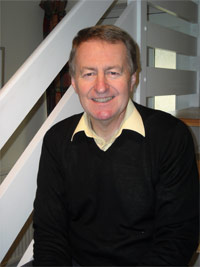
EMI Records & Pop Music
My office on the second floor at EMI House was the one above that where The Beatles leaned over the balustrade for the cover photos on the ‘Please, Please Me’ and Beatles’ hit retrospective albums.
Although I never met Tim Rice, I followed closely in his footsteps; he had been Norrie Paramor’s assistant as part of the management training programme which EMI discontinued shortly before I joined them and many colleagues followed the success of his early musicals with interest.
Induction programmes were non-existent in the pop music world of the 1960s and ’70s so it was little surprise that my second day at EMI found me in a meeting where new single releases for that week were played and I was expected to express an opinion of their hit potential.
The Shadows
Imagine my surprise when we heard a track produced by Bruce Welch, he of The Shadows and more hits than I had had hot dinners! The group was called Brotherly Love and it was at best, ordinary. But Bruce Welch was there to present it in person to the meeting.
So there was this young upstart telling a very well-known old hand that his new record wasn’t up to much! For what it’s worth history proved me right but it was with no little trepidation that I expressed my opinion as diplomatically as possible. He was accompanied by a young hopeful, totally unknown Australian singer called Olivia Newton-John (Bruce’s girlfriend or fiancée at the time, I think), an absolute stunner. I wonder what became of her?
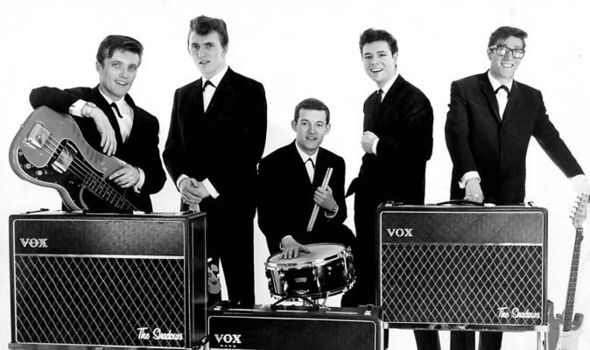
The Beatles
Ten days after I joined EMI the world was shaken to its core by the announcement that The Beatles were splitting up (I don’t think the two events were related!) Working inside EMI House that day was like being under siege with reporters and photographers swarming everywhere in Manchester Square. Staff were told to keep silent and refer all questions to the Press Office.
It was still an unforgettable few hours and some awkward moments squeezing through the media throng. In those early days after the split even the most senior executives in the company thought it was temporary and that The Beatles would work together again in due course so nobody considered it the end of an era. It also resulted in more record releases from the four individual Beatles than there had been in the immediate past from the group – John Lennon had The Plastic Ono Band, Paul McCartney issued his solo album, Ringo Starr released ‘Sentimental Journey’ and George Harrison was working on his three album set ‘All Things Must Pass’, which yielded the massive hit ‘My Sweet Lord’.

George Harrison
I saw George Harrison around then while he was recording at Abbey Road. I used to spend quite a lot of time there editing tapes and cutting vinyl masters for singles.
One evening I was in the audience in Studio Two with a record debutant – Richard Stilgoe. During a breakGeorge Harrison walked in with Phil Spector both of whom mingled with the few people necessary to make a ‘live’ recording.
We used to receive daily updates of sales despatched from the Hayes factory and I well remember how ‘My Sweet Lord’ notched up 110,000 copies in ONE DAY! The closest any other single came to that figure was 55,000 with ‘Band of Gold’, by Freda Payne.

John Lennon
Ron White was assistant Managing Director of EMI Records then and I was sitting in his office when John Lennon rang. The previous night (a Monday) he had written a new song ‘Power to the People’ and he wanted to record it. Phil Spector was to produce it and he was already on his way from America. John was ringing his musician friends to back him on the track. He went into the studio on Tuesday night, test pressings were available the next day and the single was in the shops by Friday – four days from start to finish! This included a ‘B’ side called ‘Open Your Box’, a Yoko Ono composition which had a lyric adjudged to be offensive and some of the four days were spent in delicate negotiations with senior executives to obscure the offending lines
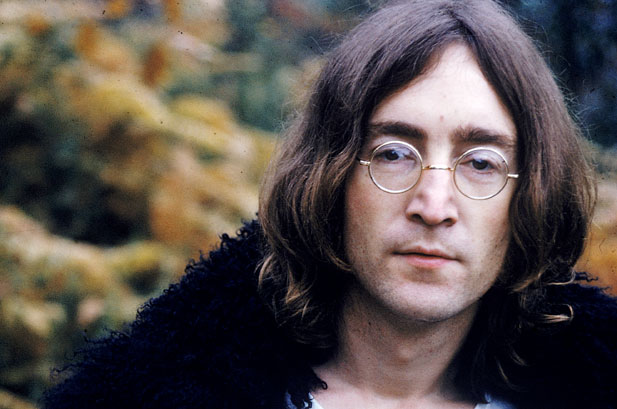
Starting Out
The first song of mine that had been recorded pre-dated all this. In 1968 I was still at College when Clinton Ford recorded ‘The Biggest Balalaika in the World’ for his album ‘Clinton the Clown’ and an unforgettable, spine-tingling memory was hearing the recording for the first time, hearing it on the radio and seeing my name on the record label. A couple of other songs that I had written were published by EMI around then, although recordings of them were not forthcoming.
Stateside
My job at EMI was to look after the repertoire on the Stateside label, now long defunct but in those days it included Gene Pitney and The Beach Boys on its artistes’ roster. Both flew in to appear on ‘Top of the Pops’. Gene Pitney I remember seemed to have as much interest in the FTSE 100 as he did in the top 40 and The Beach Boys appeared again at a press reception in the appropriately named Sloop John D, a floating night club in the middle of the Thames at Chelsea. They (and I, with many others) were there to launch their new album ‘Sunflower’.
Cliff Richard
Cliff Richard enjoyed his 50th hit ‘Good-bye Sam, Hello Samantha’, while I was in London and at a celebratory reception I met him, together with several prominent DJs of the time, Alan Freeman, Tony Blackburn and Keith Skues.
If all this sounds very glamorous, it should be borne in mind that I had a job to do and meeting well known artistes with their renowned foibles was part of it. The glamour lasted about a week!

Other Artistes – Clive Dunn, Ginger Baker, Norman ‘Hurricane’ Smith, Diana Ross
It was always exciting to watch singles emerge from nowhere to reach the top ten. Nobody rated Clive Dunn‘s chances with ‘Grand-dad’ but it only took a couple of plays on Ed Stewart’s children’s request show on Radio One to start its astronomical rise to the top of the charts.
I met Ginger Baker the legendary Cream drummer, when he came to discuss a recording by Fela Ransome-Kuti, a phenomenal musician from Africa who made an album at Abbey Road in about 1971. I recall Ginger addressing the Managing Director of EMI Records as ‘Man’.
Famous names were a daily occurrence at Abbey Road and Ken Dodd was one of many celebrities I saw there. Norman ‘Hurricane’ Smith was a Staff Producer who had just finished working on the Pink Floyd album ‘Atom Heart Mother’ and wrote a single ‘Don’t Let It Die’ which proved an unlikely top ten hit, helped enormously by the support of publisher Mickie Most and his brother Dave Most, arguably the best song plugger in the business in those days.
Diana Ross visited to appear on ‘Top of the Pops’ to sing ‘Ain’t No Mountain High Enough’. If ever anyone had star quality it was she; her relatively short stature was compensated by massive charisma. Martha Reeves & The Vandellas came over about then as well.
It may have been that edition of ‘Top of the Pops’ in which James Taylor appeared pale and wan – not because he was ill, simply that he refused to wear make-up in the unforgiving lighting of the TV studio!
Visitors to the EMI offices included a totally unknown Shakin’ Stevens with his backing band the Sunsets who disappeared over the horizon long before Shaky found fame as a solo artiste. Dave Edmunds was a fantastic guitarist and another caller. The occupant of the office next to mine was Alan Buck who had found fame as the drummer with the Four Pennies in the mid ’60s. We shared many laughs together, although sadly he is now no longer with us.
Elton John
John Reid occupied another manager’s office at EMI House – Tamla Motown. Elton John was a frequent visitor and one day Johnannounced that he was leaving to manage this bright new singer who had enjoyed a minor hit in America with ‘Border Song’.
Big oaks and small acorns!
Secondment to EMI’s subsidiary in Germany to manage the Tamla Motown label led to my continued indirect association with Elton John when I visited the set of a German TV pop programme. The group Magna Carta were appearing. I was with The Peddlars, a group of excellent musicians whose relative lack of commercial success belied their musical abilities. We Brits tend to stick together and on such occasions a programme typically took two or three days to rehearse and record; there was a lot of waiting around which gave us all time to talk.
On the second day the lead guitarist of Magna Carta told us that he had had a call from Elton John asking him if he would be interested in recording with him and joining his backing band. The guitarist was Davey Johnstone and realising the significance of this, to the credit of his musical colleagues in Magna Carta, they didn’t attempt to stand in his way.
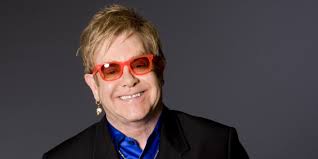
Paul McCartney, Stevie Wonder & Michael Jackson
There were thousands of US troops in Germany in those days and many American acts came over to entertain them. As Motown Label Manager part of my job was to look after the artistes during their stay and as a native English Speaker with fluent German I interviewed many of them and syndicated the resulting recordings throughout German radio stations to promote the acts and their records.
The Jackson Five were early visitors, including a fourteen year old Michael Jackson whose monosyllabic answers to eager questions were heard throughout the German media. His dancing on stage was of course mesmeric and the colourful costumes of the whole family act were a joy to behold. All the members were there, Mum, Dad, the group and young Randy Jackson who also featured briefly on stage.
I met and interviewed Stevie Wonder who had just written what became the ‘Talking Book’ album and he featured some of the numbers ‘live’ on stage. Off stage he spoke of little that wasn’t musical – I had the distinct impression that Music was a massive part of his life.
For good measure Stevie and I played a duet together on the piano – some tracks from Paul McCartney‘s ‘Ram’ album, a fairly recent release. The great ex-Beatle himself visited about then as part of the ‘Wings over Europe’ tour. I was introduced to Paul and Linda after the show; he told me of his latest single ‘Hi – Hi – Hi’ which the group played during their performances in Munich and Dusseldorf. I spent a very easy going, relaxed afternoon with the other members of Wings, Henry McCullough (ex- Grease Band) and Denny Laine (ex- Moody Blues), with whom Paul later wrote ‘Mull of Kintyre’.
Marc Bolan
When I started producing my own records I thought about making a particular record at Musicland studios in Munich, home of Georgio Moroder who at that time was best known for the hit single ‘Son of My Father’ with Chicory Tip. Boney M and all the rest were far in the future and Musicland was building a reputation due in no small measure to its talisman engineer who in those days was known by the single name Mack.
I visited the studios at the same time as Marc Bolan who was on a similar mission. I was struck by how short he was! Away from the pop music circus many artists were very different and I remember him being very laid back about everything although he checked out the facilities thoroughly and I had the impression that not much escaped his eye.
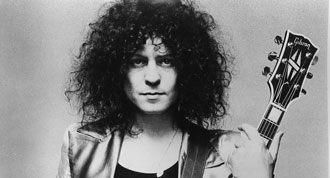
Freddie Mercury and Queen
Queen was in Cologne to promote ‘Bohemian Rhapsody’ and ‘A Night at the Opera’ both of which had already topped the charts in the UK and around the world. Due to its proximity to EMI’s German offices The Crest Hotel was the temporary domicile for the group.
I was working with a German group Eloy and my visit to that hostelry with Frank Bornemann, the driving force behind Eloy, coincided withQueen‘s for whom a lavish press reception was in full swing.
We were there to eat and to work on the group’s new album ‘Power & The Passion’.
By this time John Reid (my erstwhile Tamla Motown Label Manager colleague in London – do keep up!) was also managing Queen and his track record withElton John together with the forceful personalities of his charges meant that EMI were prepared to devote a large proportion of their promotional spend on ‘Bohemian Rhapsody’ and ‘A Night At The Opera’.
The German media were out in force gorging themselves at EMI’s expense and this was not lost on Frank who lamented that the same budget did not apply to German acts! ‘Power & The Passion’ went on to become a very successful album and the tracks are still available in several different forms and mixes some forty years later.
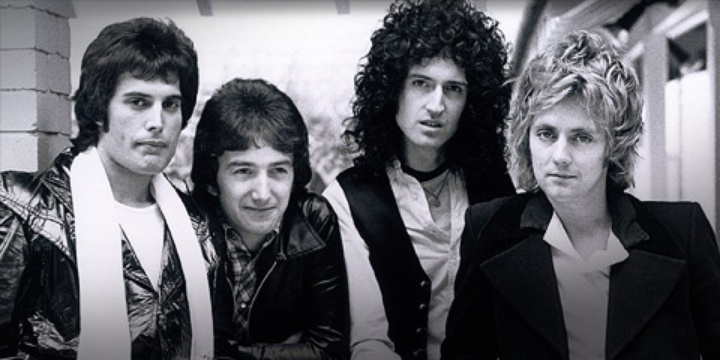
Some Other Artistes
I interviewed Edwin Starr during one of his visits. Artistes tended to stay for three or four days in Germany – enough time to prepare for a concert, often in Frankfurt or Munich because of their large American troop bases. During such visits German radio and TV producers often included them on major shows and I accompanied the artistes to maximise the promotional opportunities that their visit presented.
The Four Tops were accompanied by their backing band. I well remember how they came down to breakfast one morning clicking their fingers and dancing to a tune playing in their heads. All were consummate pop musicians with an apparently easy going take on life belying the determination which must have been the driving force behind their rise to the top of their trade.
Talking of consummate tradesmen, Ray Charles gave a mesmerising concert and afterwards I went to see him backstage. When I congratulated him he simply replied, ‘It’s my job Man, it’s my job’.
I kept bumping into Anne Murray – in London, Germany and her native Canada. Although her star has somewhat faded with time, she was famous for hits such as ‘Snowbird’ and ‘You Needed Me’. We got on very well; back home she had been a school teacher and her naturally friendly manner together with an easy sense of humour meant that she related readily to those around her.
Another Canadian female star whom I met was Joni Mitchell. Her constant companion at that time was an artiste called David Blue after whom she named the ‘Blue’ album. David was signed to the recently launched Asylum label under the watchful eyes of David Geffen and Elliot Roberts who accompanied their protégés on their promotional tours of Europe.
It was Elliot Roberts who introduced me to the latest Asylum act which was making everyone very excited, The Eagles. On a very small portable hi-fi system in his Hotel suite I heard ‘Take It Easy’ and ‘Peaceful, Easy Feeling’ and it was not difficult to become involved in the excitement.
There is something magical about hearing a new recording which instinctively you know is hit material. I first experienced it in London when I heard The Mixtures‘ ‘The Push Bike Song’ and McGuinness Flint‘s ‘When I’m Dead and Gone’. I felt it again on that occasion and a year or so later when I produced my own song ‘Got to Get Back to Pasadena’ which has sold thousands of copies around the world, especially in German speaking countries.
Pink Floyd
We met backstage while they were undertaking about three concerts in Germany in 1972. Musically they were finding themselves having won the freedom and control of their own destiny by producing their own recordings (Norman Smith had produced the last album ‘Atom Heart Mother’; see above). However they had yet to write ‘Dark Side of the Moon’. The album in between was ‘Meddle’ which was their current album when I met them. I had the impression they were not totally happy with it, despite its relative commercial success at the time.
Mickie Most
People think of Mickie Most as the first hard man on the UK TV talent shows; ‘New Faces’ was I believe his claim to fame. On the two occasions that we came into contact I found him affable although very business-like and I am quite sure he could have the shirt off your back if push came to shove. His instinct for spotting hits was legendary and incredible. The first time I saw him was in the Mayfair, London offices of RAK, his record label. The previous evening he had been all dressed up attending a pop music award ceremony where he had been presented with a gold disc of some sort. The next morning there he was up steps nailing it on the wall above the stairs! No airs and graces, very down to earth and calling a spade a shovel.
I was there to play him my latest record ‘Got To Get Back to Pasadena’ (see above). I was particularly proud of this for not only had I written and produced it, I had found the singer Gavin du Porter, singing jazz in a club and a change in direction saw him (and me) with the record bubbling under the German charts. Two major television shows had booked it and there was every indication that it would become the sizeable hit in mainland Europe that it became. Mickie Most was unimpressed – he simply said ‘I don’t see it’. For Britain he was correct – Decca did issue it to British sales of about 1500 copies!
Our next meeting was in Cologne. He was a VIP visitor being shown around the studios at EMI Electrola. I was in number two studio (actually using the mixing desk on which The Beatles had recorded ‘Sergeant Pepper’ for that was its home in those days – EMI didn’t waste money and the desk itself had yet to achieve legendary status so it was still on active service).
Mickie Most dropped by while I was recording of which time has eclipsed the memory of what we were recording but he did say that he thought we had a very good bass drum sound. I saw him as a thorough professional – outstanding at his trade and tough as old boots when he needed to be (which was quite frequently in the pop business)…..but in between very personable.
Tony Christie & The New Seekers
In the 1970s Radio Luxembourg still offered significant promotion for British records. It was even more important in Germany as it was the only daytime radio station with national coverage.
Tony Christie was massive in Germany. His hits ‘Hey Las Vegas’, ‘Is This the Way to Amarillo?’, ‘Don’t Go Down to Reno’ were probably bigger there than they were in Britain. It was therefore no surprise to see him top the bill at the annual Radio Luxembourg gala held in luxurious surroundings near the Villa Louvigny, Radio Luxembourg’s prestigious base.
Also on the bill were the New Seekers thanks to hits such as ‘Never Ending Song of Love’ and ‘I’d Like to Teach the World to Sing’, the tune of which I recognised from my days with EMI in London. Then it was called ‘True Love & Apple Pie’ sung by a lady called Susan Shirley; not evenRogers Cook and Greenaway got it right first time every time.
Paul Nicholas, Leo Sayer, Linda Ronstadt, Showaddwaddy
This eclectic mix of artistes had the same accommodation in Hamburg for we were all involved in a TV show there.
Actors can make very good pop singers – John Leyton (‘Johnny Remember Me’), Mike Sarne (‘Come Outside’), Peter Noone (Herman’s Hermits) and Paul Nicholas was no exception. No doubt their ability to project an image for a song is a major contributory factor. Certainly Paul gave an attractive performance of ‘Grandma’s Party’, a fairly big hit in Britain and mainland Europe.
In those days I worked three days a month in Holland and my involvement with this particular show was to accompany the Dutch group TeachIn who had won the Eurovision Song Contest in 1975 (the year after Abba) with the rather forgettable ‘Ding-a-Dong’.
It was ironic that Leo Sayer‘s biggest hits were with other people’s songs because he had already written some amazing songs himself having made his name writing the whole of Roger Daltrey‘s first solo album including the hit ‘Giving It All Away’; I suppose that was how Leo Sayer felt about offering his hit songs to other artistes although this was certainly not the impression he gave dressed like a clown in rags and braces. He was very chirpy – also very short – not much more than 5′ tall I guess.
Linda Ronstadt and her backing band performed a Buddy Holly song. German television studios were strange places; much of the time was spent sitting around for hours while other acts went through their paces; then there was a concentrated period when the spotlight fell on one particular participant and German TV producers obsessively rehearsed every movement to the last detail.
Poor Showaddywaddy! They were at number one in the UK chart with the old Curtis Lee number ‘Under the Moon of Love’ and in demand everywhere singing this song ad nauseam. It involved a lot of movement and their colourful Teddy Boy costumes must have been excruciatingly hot under the studio lights. That day they performed the track countless times at the apparent whim of the German TV producer noting every last eye movement and lighting change; to the group’s great credit each performance was as good as the previous one and throughout they kept their professional cool obeying each command as the TV crew put them through their paces. Despite the monotony, the group had to stay focused as the tv crew dissected the minutiae of their performance.
But afterwards….what a contrast! Everybody went absolutely crazy! Our evening meal was as one large group letting off steam after the tension and mindless repetition of the day’s labours. It is this sudden release of pent up frustration and boredom that explains how in other circumstances and by other groups TV sets were hurled out of hotel windows…and worse.
Some years later I saw the lead singer of Showaddywaddy walking through Marks & Spencer in Leicester, anonymous in the crowd.
Why did I leave?
It is very, very difficult to get into the pop music business and after graduation I had given myself two years to try; twenty-four months later I was managing the Tamla Motown label and living in Germany – not a position to abandon readily. So I stayed.
Seven and a half years later I had had the sort of experiences of which most people dream. In addition to all the above over forty pop songs which I had written had been published and recorded. I had several top ten hits and had been involved with many more, as well as hit albums. I had written and conducted my own arrangements, frequently worked as a session musician on recordings, my own and others’ productions. In short it had been an unforgettable, amazing journey and I had served what I considered to be the best apprenticeship any musician could ever wish for. I loved working with those musicians at the top of their trade, in the main thoroughly competent, lovely people.
Apprenticeship for what, was not clear for several years. Although I left the music business in 1977 it never really left me and some fifteen years later I started to play, perform, teach music and start writing again. At this time my past not only opened many doors, it showed time and again how much I had learned from those seven plus sparkling, challenging years.
I had joined EMI in London at age twenty-two and nearing thirty was living in Cologne, married to my lovely (English) wife and we were desperately homesick. I realised that time for me was running out if ever I wanted to work at any other trade and like an ageing footballer in what is indisputably a young person’s business, my touch was not as sure as it had been. (The likes of Paul McCartney, Elton John and Cliff Richard are indeed a very rare breed).
I had a very tempting offer to return to Britain and it was a surprisingly easy one to accept and in August 1977, the day Elvis Presley died, I left the record business. I never regretted it and have dined out on it for the rest of my working life.
Waddingtons Games the Leeds based manufacturers of ‘Monopoly’ offered me a job in their Product Development division, where I spent six thoroughly enjoyable years. But that is another story.